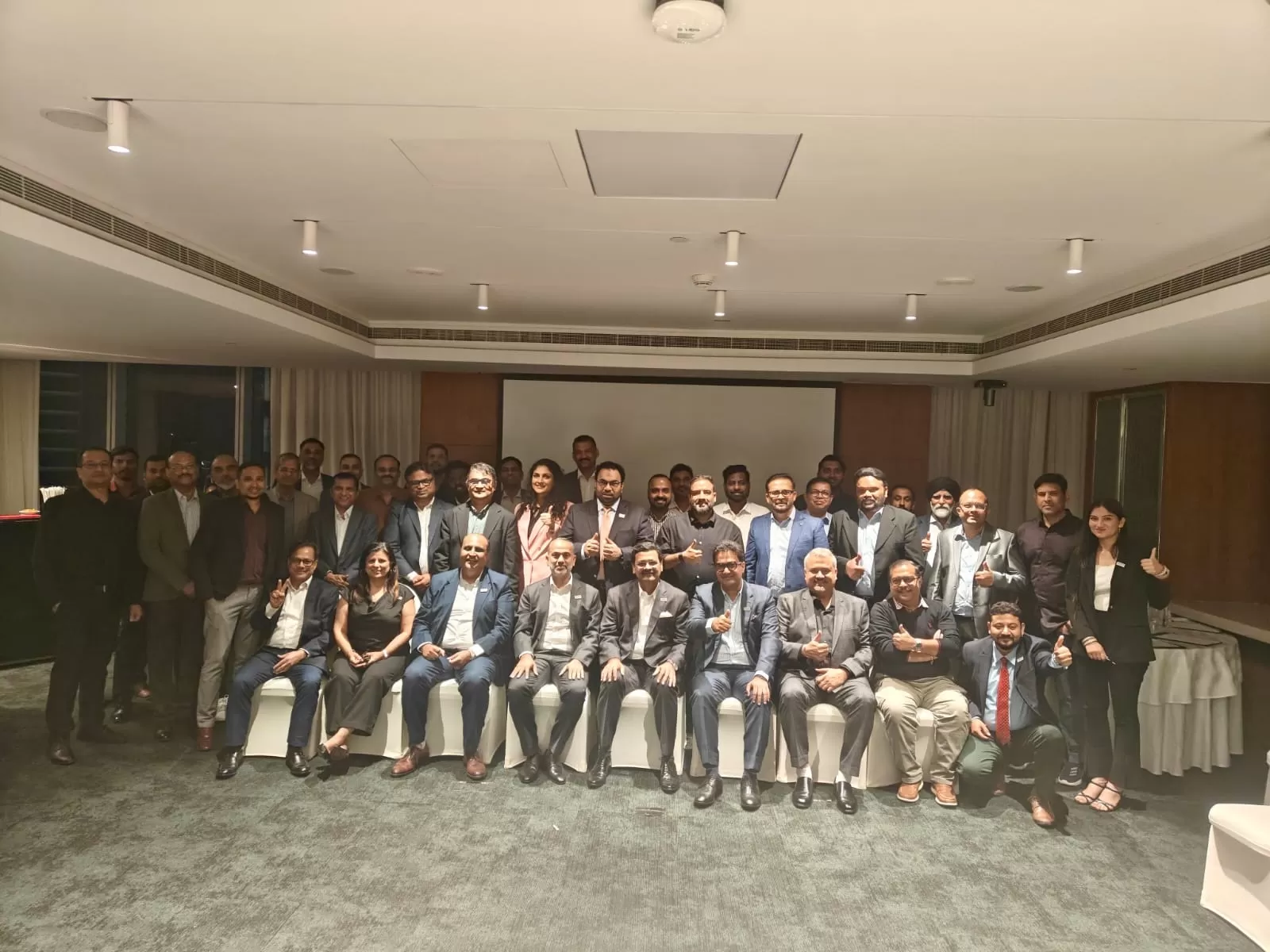- Home
- Infrastructure Transport
- ROADS & HIGHWAYS
- The money chase

The money chase
In a recent major development, the lenders of Lanco Infra have secured an option to gain control over the ailing infrastructure firm following one of the largest corporate debt restructuring (CDR) decisions, involving Rs 11,155 crore and conversion of Rs 3,024 crore of loans into equity. In another case, the promoters of Sree Metaliks face the prospect of losing the company as one of its key lenders, IFCI, plans to sell its convertible debentures to any bidder to recover its dues. Of late, there havebeen many such worrying news reports clouding the Indian infrastructure horizon. So, what has plagued the infra boom of the country and led to this financial stress?
Such instances as above and the non-performing assets (NPA) crisis are now bedevilling the public sector unit (PSU) banks, a reflection of the severe mismatch between policy and ground-level implementation of infrastructure projects across India. In fact, from lending agencies and contractors to equipment financers and developers, every stakeholder in the infrastructure and construction space seems to be embroiled in a rather lengthy and arduous money chase.
For a clear understanding of the situation, one needs to dig deeper.
Sticky situation
"Acquisition of land and delays in obtaining various project clearances, particularly environmental and other statutory approvals, continue to remain key challenges," avers Sushi Shyamal, Partner-Transaction Advisory Services, Ernst & Young. "These are causing high cost overruns and deteriorating the underlying economics, challenging the business fundamental itself. Also, the revenue profile of most projects, especially toll roads, is turning out to be lower than the bid estimates on the basis of which financial closure had been achieved. Hence, issues in servicing debt obligations are the natural outcome." Analysing market trends, Shyamal continues, "Leverage of the firms operating in the infrastructure sector for a sample of 50 BSE 500 companies has risen over the years. Total borrowing to equity has increased from 111.3 per cent in 2009-10 to 217.2 per cent in 2012-13. Private equity capital acting as catalyst to the growth story is also exhausted to a large extent." Throwing light on the PSU banks for the same period, he says, "Additionally, the median base rate of PSU banks has increased substantially from 8 per cent per annum in September 2010 to 10.25 per cent in September 2013. Infrastructure project financing as a concept encourages appropriate leverage and, therefore, increase in cost of debt would adversely impact the return on investment (RoI)."
The public private partnership (PPP) model has undoubtedly emerged as the new success route in India's attempts to build world-class infrastructure and its footprint has spread across key infrastructure segments, from roads and communications to power and airports. However, M Murali, Director General, National Highways Builders Federation (NHBF), tells us, "Achieving private-sector investment target in the infrastructure sector during the Twelfth Five-Year Plan period is challenging mainly owing to delays in clearances and a liquidity crunch." He adds that private banks, especially foreign banks, are virtually absent from the arena because of the long gestation period involved in infrastructure projects.
Praveen Sood, Group CFO and Executive Vice President, Hindustan Construction Co (HCC) Group Office, attributes the slowdown in project implementation to delay in land acquisition, clearances from the Ministry of Environment and Forest, coal linkages and other regulatory bottlenecks. "Stretched construction durations, consequent delay in payments from the Government and refusing to pay the claims even after favourable awards in favour of contractors, and dragging each case to court have all increased the interest cost of all companies in the sector," he points out. "The stressed balance sheets of promoters coupled with the underperformance of build-own-transfer (BOT) assets owing to a downtrend in economic activity have affected project viability. Because of these reasons, infrastructure financing has become less attractive to bankers. Funding new projects has become difficult and financial closures now take longer."
Devendra Vyas, CEO, Srei BNP Paribas, adds another dimension, saying, "As if the trying business scenario were not enough, the new Companies Act has now emerged as another reason for concern, especially for smaller players. With this new Act, business, both listed and unlisted, now needs to adhere to strict compliance norms that will discourage new and existing enterprises, especially small-time players."
And on the Reserve Bank of India's recent concerns over lending funds to the real estate sector, Pushpamitra Das, Group CFO, Rustomjee Group, observes, "On the commercial front, there is a lot of unsold stock and leasable assets yet to be monetised; therefore, a lot of developers are on the lookout for funds from banks to bridge this gap. But banks continue to look for overall debt leverage and interest serviceability of the assets of these developers before lending funds."
KEY FINANCIAL PARAMETERS OF TOP CONSTRUCTION AND CONTRACTING - CIVIL COMPANIES
Debt/Liability fi gures as per the latest Balance Sheet available. Net Sales, Net Profi t, Interest and Tax paid as per the latest Profi t & Loss Account available. (Data as on 20th February 2014)
Company | Debt ( Rs Cr) | % of Libility | Net Sales (Rs Cr) | Debt to Net Sales Ratio | Net Profit (Rs Cr) | & of Debt | Interest ( Rs Cr) | Tax (Rs Cr) | EBIT ( Rs Cr) | Interest Coverage Ratio |
|---|---|---|---|---|---|---|---|---|---|---|
| HCC | 4,574.88 | 53.64 | 3,832.29 | 1.19 | -137.64 | -3.01 | 529.67 | |||
| Gammon India | 3,300.44 | 39.05 | 5,197.36 | 0.64 | -445.67 | -13.50 | 443.41 | |||
| Unitech | 2,509.70 | 14.81 | 1,053.09 | 2.38 | 151.98 | 6.06 | 304.39 | 79.92 | 536.29 | 1.76 |
| IVRCL | 2,504.74 | 29.57 | 3,759.09 | 0.67 | -101.66 | -4.06 | 347.89 | |||
| Patel Engineering | 2,485.08 | 44.68 | 3,103.21 | 0.80 | 49.22 | 1.98 | 420.11 | 27.51 | 496.84 | 1.18 |
| NCC | 2,055.75 | 25.53 | 5,250.47 | 0.39 | 35.98 | 1.75 | 384 | 16.94 | 436.92 | 1.14 |
| ARSS Infrastructure | 1,341.54 | 65.12 | 770.98 | 1.74 | -64.59 | -4.81 | 133.82 | |||
| Gayatri Projects | 1,330.08 | 45.41 | 2,022.20 | 0.66 | 63.09 | 4.74 | 135.23 | 38.92 | 237.24 | 1.75 |
| ILandFS Engg. | 1,277.08 | 43.81 | 2,042.56 | 0.63 | -135.31 | -10.60 | 213.31 | |||
| C & C Constructions | 1,252.82 | 46.49 | 1,000.49 | 1.25 | -194.3 | -15.51 | 154.73 | |||
| Ramky Infrastructure | 1,051.24 | 25.05 | 3,038.62 | 0.35 | 59.93 | 5.70 | 169.66 | 30.71 | 260.3 | 1.53 |
| Pratibha Industries | 1,017.33 | 40.53 | 1,649.64 | 0.62 | 95.17 | 9.35 | 116.14 | 35.63 | 246.94 | 2.13 |
| Unity Infraprojects | 997.19 | 45.53 | 2,045.41 | 0.49 | 92.56 | 9.28 | 152.75 | 29.95 | 275.26 | 1.80 |
| CCCL | 713.66 | 33.97 | 1,715.31 | 0.42 | -57.92 | -8.12 | 100.67 | |||
| ITD Cementation | 621.42 | 38.8 | 1,298.47 | 0.48 | 21.98 | 3.54 | 103.41 | 5.46 | 130.85 | 1.27 |
| Gammon Infra | 529.97 | 40.04 | 124.34 | 4.26 | 30.43 | 5.74 | 42.46 | 22.42 | 95.31 | 2.24 |
| Madhucon Projects | 478.48 | 15.52 | 1,044.97 | 0.46 | 33.77 | 7.06 | 110.9 | 0.45 | 145.12 | 1.31 |
| MBL Infrastructure | 336.33 | 37.16 | 1,251.42 | 0.27 | 70.84 | 21.06 | 46.03 | 32.73 | 149.6 | 3.25 |
| JMC Projects | 252.06 | 16.57 | 2,076.38 | 0.12 | 51.94 | 20.61 | 53.94 | |||
| Ashoka Buildcon | 237.73 | 11.45 | 1,637.62 | 0.15 | 102.15 | 42.97 | 39.68 | 42.48 | 184.31 | 4.64 |
| Ahluwalia Contracts | 232.24 | 22.35 | 1,388.21 | 0.17 | -76.22 | -32.82 | 33.39 | |||
| Valecha Engg. | 230.1 | 23.32 | 739.72 | 0.31 | 20.7 | 9.00 | 37.5 | 9.74 | 67.94 | 1.81 |
| RPP Infra Projects | 85.14 | 30.78 | 257.17 | 0.33 | 10.85 | 12.74 | 14.55 | 4.31 | 29.71 | 2.04 |
| Man Infraconstruction | 15.91 | 2.05 | 370.41 | 0.04 | 43.58 | 273.92 | 2.69 | 16.71 | 62.98 | 23.41 |
The stress zone
While most infrastructure-related projects have been affected by financial stress, some sectors have been hit particularly hard. "In roads and highways, the weak financial position of concessionaires and developers, delays in project clearances, unrealistic bids and a host of other factors have stalled progress," says Vyas. "BOT projects have been hit the hardest. Awards of national highway stretches under BOT have almost got stalled."
For his part, Shyamal highlights the plight of the power sector. "The sector was crippled by the poor performance of thermal power plants, with load factors declining continuously to almost early 2000 levels," he elaborates. "Loss of power generation owing to shortage of coal and gas amounted to around 50 BU in 2012-13 and about 11.4 BU in the first four months of 2013-14. Although directives to sign fuel supply have been given, the demand-supply imbalance of coal is yet to be resolved."
The infrastructure and construction equipment (ICE) sector in India has not been spared from the impact either. "There is hardly any incentive for capacity addition, which has adversely affected demand for capital goods," says Vyas. "Some policy-level changes made for securitisation have created fresh bottlenecks for refinancing which we, the industry, are trying to address through regular dialogues with the Government."
Roopchand Betala, Director, Volvie Capital Management, raises a flag on the grim scenario. In his words, "Unless the Government; banks; equity owners; and engineering, procurement, construction (EPC) companies come together and arrive at a concrete conclusion; it is very difficult to recover the current debt that is stuck."
On the lack of a level-playing field, Vyas says, "With the regulatory framework tilted heavily in favour of borrowers, repossession of assets in case of defaults becomes more challenging for non-banking financial companies (NBFCs). NBFCs do not enjoy a level playing field vis-a-vis banks and other financial institutions, especially when it comes to imposing taxes on sticky advances, making provisions for bad loans or offering sops and while recovering assets once a loan goes bad."
Tiding over the debt trap
As a rescue mechanism, many infrastructure companies are opting for CDR to avail additional time for debt servicing, subject to certain terms and conditions. According to the latest available information, between April and December 2013, banks have referred a record Rs 1 lakh crore plus worth of stressed assets to the CDR cell. In December alone, 14 cases worth over Rs 18,000 crore were referred. Given this scenario, RBI had already raised an alarm and is in the process of developing systems for early detection of financial distress and plans new entities to restructure and buy distressed assets.
"CDR will allow the sponsor to increase its ability to meet the obligations without hampering the operations of the project with support from the lenders," affirms Shyamal. He adds that some projects would probably require fundamental correction of financial structures to achieve alignment with the project economics.
Sharing his company's experience, Sood says, "As most infrastructure projects started getting delayed, HCC, being the leading contractor, got hit by time and cost overruns. Site engineers and supervisors feared taking decisions and passed everything to the third party - HCC. The favourable arbitration awards got challenged in courts till the Supreme Court. This led to the creation of huge receivables from various government agencies on account of claims wherein major cost was incurred upfront. This severely affected cash flows and interest outflows not matching with business size; hence, HCC had to apply for CDR. The amount referred for CDR is Rs 3,300 crore of long-term debts."
At the same time, he adds that HCC has total receivables to the tune of Rs 7,500 crore for which claims are either pending with the client, arbitrators or courts. Further, the company has formed a special taskforce to speed up the recovery of the outstanding from various government agencies and geared up to implement prudent measures aimed at efficient project management and tight control over costs in this lean phase along with monetisation of its non-core assets.
State Bank of Bikaner & Jaipur (SBBJ), the largest subsidiary of State Bank of India, has restructured assets worth Rs 3,200 crore until December 2013 for sectors such as power, infrastructure and iron and steel. On the next move, B Sriram, Managing Director, SBBJ opines, "I think there will be a second (round of) restructuring where the Government is considering giving bonds. Once it is finalised, we will be able to go forward in that direction." Offering his perspective on CDR, Gajendra Haldea, Advisor (Infrastructure) to the Deputy Chairman, Planning Commission of India, tells us, "There seems to be no option but to undertake debt restructuring for projects under stress. In most cases, such stress has occurred on account of lapses of the borrower as well as the bank. As a result, both may have to take haircuts sufficient to restore the health of the project, as half-hearted measures may not suffice."
Bill on the anvil
In a bid to address infrastructure bottlenecks in an efficient manner, the Planning Commission has finalised The Public Contracts (Settlement of Disputes) Bill 2013 and submitted it before the Prime Minister's Office. "The Bill proposes a fast-track transparent mechanism for resolution of disputes in PPP projects in the infrastructure sector," explains Shyamal. "It provides a mechanism to safeguard investments and encourage further investment. The Bill will also consider unlocking investments stuck owing to projects being stalled and delayed."
On the efficacy of this Bill and its impact on correcting the current system, Sood says, "There is no impact so far. Until the intent is clear and an environment is created for early settlement of dispute and pay, it is not going to work." Meanwhile, Haldea observes that its efficacy can only be judged after the Bill becomes law. "It is widely recognised that an efficient and cost-effective resolution of disputes is central to the implementation of public contracts," he says. "The passage of the Bill is, therefore, of critical importance."
While he believes this Bill is a welcome initiative from the Government, Amit Gossain, President, Indian Construction Equipment Manufacturers' Association (iCEMA), emphasises that critical sector-specific issues need to be addressed to realise the true potential of PPP. "The Government should ensure that all projects are awarded to the private sector only after securing key sovereign clearances," he says. "It should also look at setting up an independent PPP Commission for PPP regulations."
Towards financial closure
While any and every initiative is welcome, it is evident that there is no simple and single answer to mitigate the current financial stress. The experts call for fiscal and structural prudence at different levels. This includes lenders conducting thorough due-diligence on customer profiles before each disbursement; developers and contractors avoiding over leveraging at all costs and maintaining a healthy mix of debt and equity at a time when offtake is low and margins are under pressure; and policymakers putting in place the right policies, such as an effective single-window clearance mechanism, leasing with an ideal tax-structure, securitisation and easing resource mobilisation norms from abroad along with dedicated infrastructure development funds and new financial instruments to kickstart the stalled investment cycle.
"Unless the Government creates a special bond market and institution for funding infrastructure projects, which needs long-term funding and which banks are unable to provide, the sector will suffer," cautions Sood.
According to Betala, "An alternative solution could be to create a special purpose vehicle (SPV) where the Government provides complete guarantee and the SPV raises capital to complete the project." Looking at things from another angle, Shyamal says, "We are starting to see more interest emanating from new sources of capital, such as sovereign wealth funds and pension funds. We may also see large strategic investments in select sectors coming through players emerging out of Europe, MENA, Japan, China and Korea. India will continue to be in the forefront among the emerging markets."
Eventually, it boils down to the Government's action plans to reset the course of the Indian infrastructure sector on a dynamic and prosperous growth path. "The Government is taking measures on several fronts to clear pending projects under the oversight of the Cabinet Committee on Investments," Haldea reassures us. "This includes environment and forest clearances." Going forward, we hope this will put an end to the slew of delays and the marathon money chase so that each stakeholder in the Indian infrastructure value chain can focus on what is of paramount importance: nation building by value creation.
The Indian 'Infrancial' race against time
- Receivables of Indian road contractors from NHAI: Approx. Rs 12,400 crore as on Feb 2014
- Loans overdue of Indian road contractors from banks: Approx. Rs 3,500 crore as on Feb 2014
- Receivables of Indian infrastructure companies from project owners: Approx. Rs 97,000 crore as on Feb 2014
- Outstanding loans / overdues of Indian infrastructure companies from banks: Approx.Rs 20,000 crore as on Feb 2014
- Between April and December 2013, banks have referred a record over Rs 1 lakh crore worth of stressed assets to the CDR cell.
- As per RBI, the amount of recast loans touched an all-time high of Rs 4 trillion or 10.2 per cent of the overall advances as of September 2013.
- NHAI and NHBF have formed a registered entity called Society for Affordable Redressal Of Disputes (SAROD) for institutional arbitration in a time bound and cost-effective manner.
- RBI is developing systems for early detection of financial distress and plans new entities to restructure and buy distressed assets.
(With additional inputs from RAHUL KAMAT and AHLAM RAIS)
To share your experience with project delays and disputed payments, write in at feedback@ASAPPmedia.com
Delays and disputed payments in the Indian infrastructure space have embroiled all stakeholders – from lending agencies to contractors, equipment fi nancers to developers – in a mammoth money chase. MANAS R BASTIA delves into the cause of the problem and offers practical solutions peppered with expert perspectives.In a recent major development, the lenders of Lanco Infra have secured an option to gain control over the ailing infrastructure firm following one of the largest corporate debt restructuring (CDR) decisions, involving Rs 11,155 crore and conversion of Rs 3,024 crore of loans into equity. In another case, the promoters of Sree Metaliks face the prospect of losing the company as one of its key lenders, IFCI, plans to sell its convertible debentures to any bidder to recover its dues. Of late, there havebeen many such worrying news reports clouding the Indian infrastructure horizon. So, what has plagued the infra boom of the country and led to this financial stress? Such instances as above and the non-performing assets (NPA) crisis are now bedevilling the public sector unit (PSU) banks, a reflection of the severe mismatch between policy and ground-level implementation of infrastructure projects across India. In fact, from lending agencies and contractors to equipment financers and developers, every stakeholder in the infrastructure and construction space seems to be embroiled in a rather lengthy and arduous money chase. For a clear understanding of the situation, one needs to dig deeper. Sticky situation Acquisition of land and delays in obtaining various project clearances, particularly environmental and other statutory approvals, continue to remain key challenges, avers Sushi Shyamal, Partner-Transaction Advisory Services, Ernst & Young. These are causing high cost overruns and deteriorating the underlying economics, challenging the business fundamental itself. Also, the revenue profile of most projects, especially toll roads, is turning out to be lower than the bid estimates on the basis of which financial closure had been achieved. Hence, issues in servicing debt obligations are the natural outcome. Analysing market trends, Shyamal continues, Leverage of the firms operating in the infrastructure sector for a sample of 50 BSE 500 companies has risen over the years. Total borrowing to equity has increased from 111.3 per cent in 2009-10 to 217.2 per cent in 2012-13. Private equity capital acting as catalyst to the growth story is also exhausted to a large extent. Throwing light on the PSU banks for the same period, he says, Additionally, the median base rate of PSU banks has increased substantially from 8 per cent per annum in September 2010 to 10.25 per cent in September 2013. Infrastructure project financing as a concept encourages appropriate leverage and, therefore, increase in cost of debt would adversely impact the return on investment (RoI). The public private partnership (PPP) model has undoubtedly emerged as the new success route in India's attempts to build world-class infrastructure and its footprint has spread across key infrastructure segments, from roads and communications to power and airports. However, M Murali, Director General, National Highways Builders Federation (NHBF), tells us, Achieving private-sector investment target in the infrastructure sector during the Twelfth Five-Year Plan period is challenging mainly owing to delays in clearances and a liquidity crunch. He adds that private banks, especially foreign banks, are virtually absent from the arena because of the long gestation period involved in infrastructure projects. Praveen Sood, Group CFO and Executive Vice President, Hindustan Construction Co (HCC) Group Office, attributes the slowdown in project implementation to delay in land acquisition, clearances from the Ministry of Environment and Forest, coal linkages and other regulatory bottlenecks. Stretched construction durations, consequent delay in payments from the Government and refusing to pay the claims even after favourable awards in favour of contractors, and dragging each case to court have all increased the interest cost of all companies in the sector, he points out. The stressed balance sheets of promoters coupled with the underperformance of build-own-transfer (BOT) assets owing to a downtrend in economic activity have affected project viability. Because of these reasons, infrastructure financing has become less attractive to bankers. Funding new projects has become difficult and financial closures now take longer. Devendra Vyas, CEO, Srei BNP Paribas, adds another dimension, saying, As if the trying business scenario were not enough, the new Companies Act has now emerged as another reason for concern, especially for smaller players. With this new Act, business, both listed and unlisted, now needs to adhere to strict compliance norms that will discourage new and existing enterprises, especially small-time players. And on the Reserve Bank of India's recent concerns over lending funds to the real estate sector, Pushpamitra Das, Group CFO, Rustomjee Group, observes, On the commercial front, there is a lot of unsold stock and leasable assets yet to be monetised; therefore, a lot of developers are on the lookout for funds from banks to bridge this gap. But banks continue to look for overall debt leverage and interest serviceability of the assets of these developers before lending funds.KEY FINANCIAL PARAMETERS OF TOP CONSTRUCTION AND CONTRACTING - CIVIL COMPANIESDebt/Liability fi gures as per the latest Balance Sheet available. Net Sales, Net Profi t, Interest and Tax paid as per the latest Profi t & Loss Account available. (Data as on 20th February 2014)CompanyDebt ( Rs Cr) % of Libility Net Sales (Rs Cr) Debt to Net Sales Ratio Net Profit (Rs Cr) & of Debt Interest ( Rs Cr) Tax (Rs Cr) EBIT ( Rs Cr) Interest Coverage Ratio HCC4,574.8853.643,832.291.19-137.64-3.01529.67 GammonIndia3,300.4439.055,197.360.64-445.67-13.50443.41 Unitech2,509.7014.811,053.092.38151.986.06304.3979.92536.291.76IVRCL2,504.7429.573,759.090.67-101.66-4.06347.89 PatelEngineering2,485.0844.683,103.210.8049.221.98420.1127.51496.841.18NCC2,055.7525.535,250.470.3935.981.7538416.94436.921.14ARSSInfrastructure1,341.5465.12770.981.74-64.59-4.81133.82 GayatriProjects1,330.0845.412,022.200.6663.094.74135.2338.92237.241.75ILandFSEngg.1,277.0843.812,042.560.63-135.31-10.60213.31 C & CConstructions1,252.8246.491,000.491.25-194.3-15.51154.73 RamkyInfrastructure1,051.2425.053,038.620.3559.935.70169.6630.71260.31.53PratibhaIndustries1,017.3340.531,649.640.6295.179.35116.1435.63246.942.13UnityInfraprojects997.1945.532,045.410.4992.569.28152.7529.95275.261.80CCCL713.6633.971,715.310.42-57.92-8.12100.67 ITDCementation621.4238.81,298.470.4821.983.54103.415.46130.851.27GammonInfra529.9740.04124.344.2630.435.7442.4622.4295.312.24MadhuconProjects478.4815.521,044.970.4633.777.06110.90.45145.121.31MBLInfrastructure336.3337.161,251.420.2770.8421.0646.0332.73149.63.25JMCProjects252.0616.572,076.380.1251.9420.6153.94 AshokaBuildcon237.7311.451,637.620.15102.1542.9739.6842.48184.314.64AhluwaliaContracts232.2422.351,388.210.17-76.22-32.8233.39 ValechaEngg.230.123.32739.720.3120.79.0037.59.7467.941.81RPP InfraProjects85.1430.78257.170.3310.8512.7414.554.3129.712.04ManInfraconstruction15.912.05370.410.0443.58273.922.6916.7162.9823.41The stress zone While most infrastructure-related projects have been affected by financial stress, some sectors have been hit particularly hard. In roads and highways, the weak financial position of concessionaires and developers, delays in project clearances, unrealistic bids and a host of other factors have stalled progress, says Vyas. BOT projects have been hit the hardest. Awards of national highway stretches under BOT have almost got stalled. For his part, Shyamal highlights the plight of the power sector. The sector was crippled by the poor performance of thermal power plants, with load factors declining continuously to almost early 2000 levels, he elaborates. Loss of power generation owing to shortage of coal and gas amounted to around 50 BU in 2012-13 and about 11.4 BU in the first four months of 2013-14. Although directives to sign fuel supply have been given, the demand-supply imbalance of coal is yet to be resolved. The infrastructure and construction equipment (ICE) sector in India has not been spared from the impact either. There is hardly any incentive for capacity addition, which has adversely affected demand for capital goods, says Vyas. Some policy-level changes made for securitisation have created fresh bottlenecks for refinancing which we, the industry, are trying to address through regular dialogues with the Government. Roopchand Betala, Director, Volvie Capital Management, raises a flag on the grim scenario. In his words, Unless the Government; banks; equity owners; and engineering, procurement, construction (EPC) companies come together and arrive at a concrete conclusion; it is very difficult to recover the current debt that is stuck. On the lack of a level-playing field, Vyas says, With the regulatory framework tilted heavily in favour of borrowers, repossession of assets in case of defaults becomes more challenging for non-banking financial companies (NBFCs). NBFCs do not enjoy a level playing field vis-a-vis banks and other financial institutions, especially when it comes to imposing taxes on sticky advances, making provisions for bad loans or offering sops and while recovering assets once a loan goes bad. Tiding over the debt trap As a rescue mechanism, many infrastructure companies are opting for CDR to avail additional time for debt servicing, subject to certain terms and conditions. According to the latest available information, between April and December 2013, banks have referred a record Rs 1 lakh crore plus worth of stressed assets to the CDR cell. In December alone, 14 cases worth over Rs 18,000 crore were referred. Given this scenario, RBI had already raised an alarm and is in the process of developing systems for early detection of financial distress and plans new entities to restructure and buy distressed assets. CDR will allow the sponsor to increase its ability to meet the obligations without hampering the operations of the project with support from the lenders, affirms Shyamal. He adds that some projects would probably require fundamental correction of financial structures to achieve alignment with the project economics. Sharing his company's experience, Sood says, As most infrastructure projects started getting delayed, HCC, being the leading contractor, got hit by time and cost overruns. Site engineers and supervisors feared taking decisions and passed everything to the third party - HCC. The favourable arbitration awards got challenged in courts till the Supreme Court. This led to the creation of huge receivables from various government agencies on account of claims wherein major cost was incurred upfront. This severely affected cash flows and interest outflows not matching with business size; hence, HCC had to apply for CDR. The amount referred for CDR is Rs 3,300 crore of long-term debts. At the same time, he adds that HCC has total receivables to the tune of Rs 7,500 crore for which claims are either pending with the client, arbitrators or courts. Further, the company has formed a special taskforce to speed up the recovery of the outstanding from various government agencies and geared up to implement prudent measures aimed at efficient project management and tight control over costs in this lean phase along with monetisation of its non-core assets. State Bank of Bikaner & Jaipur (SBBJ), the largest subsidiary of State Bank of India, has restructured assets worth Rs 3,200 crore until December 2013 for sectors such as power, infrastructure and iron and steel. On the next move, B Sriram, Managing Director, SBBJ opines, I think there will be a second (round of) restructuring where the Government is considering giving bonds. Once it is finalised, we will be able to go forward in that direction. Offering his perspective on CDR, Gajendra Haldea, Advisor (Infrastructure) to the Deputy Chairman, Planning Commission of India, tells us, There seems to be no option but to undertake debt restructuring for projects under stress. In most cases, such stress has occurred on account of lapses of the borrower as well as the bank. As a result, both may have to take haircuts sufficient to restore the health of the project, as half-hearted measures may not suffice. Bill on the anvil In a bid to address infrastructure bottlenecks in an efficient manner, the Planning Commission has finalised The Public Contracts (Settlement of Disputes) Bill 2013 and submitted it before the Prime Minister's Office. The Bill proposes a fast-track transparent mechanism for resolution of disputes in PPP projects in the infrastructure sector, explains Shyamal. It provides a mechanism to safeguard investments and encourage further investment. The Bill will also consider unlocking investments stuck owing to projects being stalled and delayed. On the efficacy of this Bill and its impact on correcting the current system, Sood says, There is no impact so far. Until the intent is clear and an environment is created for early settlement of dispute and pay, it is not going to work. Meanwhile, Haldea observes that its efficacy can only be judged after the Bill becomes law. It is widely recognised that an efficient and cost-effective resolution of disputes is central to the implementation of public contracts, he says. The passage of the Bill is, therefore, of critical importance. While he believes this Bill is a welcome initiative from the Government, Amit Gossain, President, Indian Construction Equipment Manufacturers' Association (iCEMA), emphasises that critical sector-specific issues need to be addressed to realise the true potential of PPP. The Government should ensure that all projects are awarded to the private sector only after securing key sovereign clearances, he says. It should also look at setting up an independent PPP Commission for PPP regulations. Towards financial closure While any and every initiative is welcome, it is evident that there is no simple and single answer to mitigate the current financial stress. The experts call for fiscal and structural prudence at different levels. This includes lenders conducting thorough due-diligence on customer profiles before each disbursement; developers and contractors avoiding over leveraging at all costs and maintaining a healthy mix of debt and equity at a time when offtake is low and margins are under pressure; and policymakers putting in place the right policies, such as an effective single-window clearance mechanism, leasing with an ideal tax-structure, securitisation and easing resource mobilisation norms from abroad along with dedicated infrastructure development funds and new financial instruments to kickstart the stalled investment cycle. Unless the Government creates a special bond market and institution for funding infrastructure projects, which needs long-term funding and which banks are unable to provide, the sector will suffer, cautions Sood. According to Betala, An alternative solution could be to create a special purpose vehicle (SPV) where the Government provides complete guarantee and the SPV raises capital to complete the project. Looking at things from another angle, Shyamal says, We are starting to see more interest emanating from new sources of capital, such as sovereign wealth funds and pension funds. We may also see large strategic investments in select sectors coming through players emerging out of Europe, MENA, Japan, China and Korea. India will continue to be in the forefront among the emerging markets. Eventually, it boils down to the Government's action plans to reset the course of the Indian infrastructure sector on a dynamic and prosperous growth path. The Government is taking measures on several fronts to clear pending projects under the oversight of the Cabinet Committee on Investments, Haldea reassures us. This includes environment and forest clearances. Going forward, we hope this will put an end to the slew of delays and the marathon money chase so that each stakeholder in the Indian infrastructure value chain can focus on what is of paramount importance: nation building by value creation. The Indian 'Infrancial' race against time Receivables of Indian road contractors from NHAI: Approx. Rs 12,400 crore as on Feb 2014 Loans overdue of Indian road contractors from banks: Approx. Rs 3,500 crore as on Feb 2014 Receivables of Indian infrastructure companies from project owners: Approx. Rs 97,000 crore as on Feb 2014 Outstanding loans / overdues of Indian infrastructure companies from banks: Approx.Rs 20,000 crore as on Feb 2014 Between April and December 2013, banks have referred a record over Rs 1 lakh crore worth of stressed assets to the CDR cell. As per RBI, the amount of recast loans touched an all-time high of Rs 4 trillion or 10.2 per cent of the overall advances as of September 2013. NHAI and NHBF have formed a registered entity called Society for Affordable Redressal Of Disputes (SAROD) for institutional arbitration in a time bound and cost-effective manner. RBI is developing systems for early detection of financial distress and plans new entities to restructure and buy distressed assets. (With additional inputs from RAHUL KAMAT and AHLAM RAIS) To share your experience with project delays and disputed payments, write in at feedback@ASAPPmedia.com

Autodesk-Deloitte report: Digital tech driving construction efficiency
India’s construction industry is not just evolving, it is undergoing a complete transformation. According to the "State of Digital Adoption in the Construction Industry 2025" report by Autodesk and Deloitte, digital technologies are revolutionising how projects are planned, executed, and delivered, unlocking unprecedented efficiencies and opportunities. From automation and cloud-based solutions to artificial intelligence-driven analytics, companies are increasingly turning to digital tools to stay competitive in an industry traditionally dominated by manual processes. But what is driving th..

Fima Carlo Frattini Unveils Park Lane
Fima Carlo Frattini stands as a global leader in luxury bathroom and kitchen fittings, renowned for its unwavering commitment to excellence and sustainable innovation. The brand’s dedication to eco-friendly practices is reflected in its use of photovoltaic power and environmentally responsible materials, setting a benchmark for conscious luxury. In India, Fima Carlo Frattini has cultivated a strong presence, offering an exquisite range of products that blend Italian sophistication with local sensibilities.Continuing its legacy of design innovation, Fima Carlo Frattini proudly unveils Park La..

ASPA MEA Open House 2025 Successfully Concludes
The Authentication Solution Providers’ Association (ASPA) successfully hosted its MEA Open House on April 24, 2025, at Anantara Downtown Dubai, bringing together 46 delegates representing 17 companies across the authentication, packaging, and brand protection industries. The event marked a significant milestone in ASPA’s mission to expand its global footprint and strengthen collaboration against counterfeiting in the Middle East and Africa (MEA) region.The evening commenced with an engaging agenda moderated by Kaunain Shahidi, Packaging and Sustainability Expert. Manoj Kochar, ..
Latest Updates
Advertisement
Recommended for you
Advertisement
Subscribe to Our Newsletter
Get daily newsletters around different themes from Construction world.
Advertisement
Advertisement
Advertisement
subscribe to the newsletter
Don't miss out on valuable insights and opportunities
to connect with like minded professionals














